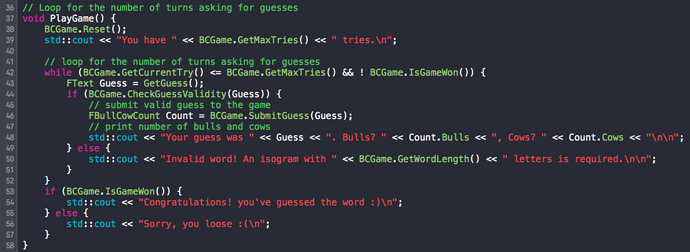I’m learning C++ but I have a huge experience with Java, JavaScript, Perl among others, so I ended up with this:

I used a regular expression to verify if the incoming word is an isogram, and also verify if it has the same length as the hidden word. This is important to avoid “Index Out Of Bounds” exceptions (not sure how C++ calls it).
I don’t understand why we would need 2 loops, as with just one is enough to verify if the letter is the same on a particular position; as the position is given by the index of the loop.
Finally, on the main GetGuess method, I used the following to convert the input guess to lowercase (to make the life of FBullCowGame easier):
std::transform(Guess.begin(), Guess.end(), Guess.begin(), ::tolower);


